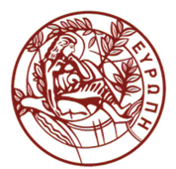Περιγραφή
Απαιτήσεις ολοκλήρωσης
Networks are everywhere. The World Wide Web, Facebook, twitter, etc. are the most visible examples. Many more networks exist in our social life, such as networks of friends/enemies, colleagues, etc. These networks provide information, shape our political attitudes, generally, influence our opinions, and they link us to everybody else in the world. In other words, the world is smaller than we think. Even economic and financial markets look much more like networks than anonymous marketplaces. Firms interact with the same suppliers and customers and use Web-like supply chains. Systemic risk in financial markets is often created within this financial network. The spread and containment of epidemics often exhibit a marked networked structure. We will study the complex connectedness of modern society: Overview, Graphs, Strong and Weak Ties, Networks in Their Surrounding Contexts, Positive and Negative Relationships, Games: theory and applications in networks, Markets and Strategic Interaction in Networks, Information Networks and the World Wide Web: the structure of the web and link analysis, Network Dynamics: in populations and structures, etc...
Τελευταία τροποποίηση: Τρίτη, 8 Μαρτίου 2016, 12:07 PM

